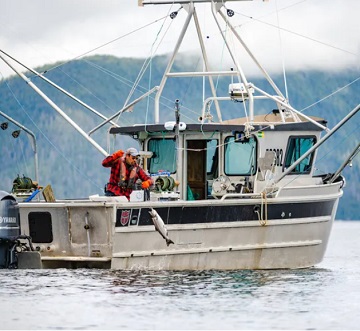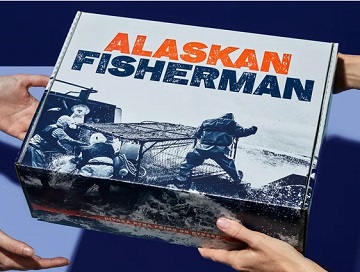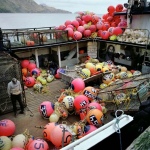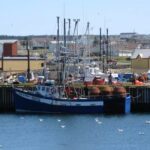Tag Archives: Alaska

Alaska Fish and Game announces closure of Chinook salmon commercial troll fishery at 11:59 p.m., Wednesday, July 12, 2023
The commercial troll fishery will close to the retention of Chinook salmon at 11:59 p.m., Wednesday, July 12, 2023. The current target harvest for the first Chinook salmon retention period of 77,100 Chinook salmon is expected to be reached by this time. All Chinook salmon must be offloaded prior to operating troll gear for other salmon species, according to the Fish and Game announcement. All processors and trollers are required to submit fish tickets to the department within seven days of landing. A freezer catcher–processor (FAS) that retains coho salmon onboard after the Chinook salmon fishery closure must,,, >click to read< 20:53
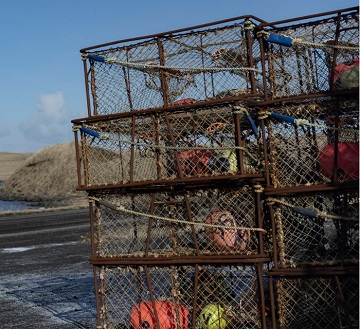
The snow crab vanishes
My small turboprop plane whirred low through thick clouds. Below me, St. Paul Island cut a golden, angular shape in the shadow-dark Bering Sea. I saw a lone island village — a grid of houses, a small harbor, and a road that followed a black ribbon of coast. Some 330 people, most of them Indigenous, live in the village of St. Paul, about 800 miles west of Anchorage, where the local economy depends almost entirely on the commercial snow crab business. Over the last few years, 10 billion snow crabs have unexpectedly vanished from the Bering Sea. I was traveling there to find out what the villagers might do next. Photos, >click to read< 15:54

Crab ice cream, anyone? How we might be able to eat our way out of an invasive green crab problem
They’re tiny and they’re wreaking havoc on our coasts, but they also taste pretty good. European green crabs have posed a problem off the coast of Vancouver Island for decades now, and while current conservation efforts have focused on deep freezing them and throwing them in a landfill, some suggest eating them instead. The species, which is found across the Pacific Northwest is aggressive and feeds voraciously on shellfish; they have no natural predators, and they reproduce at a high rate. Each female can have up to 185,000 babies at a time. It’s not just a West Coast problem. Fisheries and Oceans Canada notes that the species, which originally came from Europe and North Africa and likely hitched a ride to North America on wooden ships in the early 19th century, first invaded east coast waters in the 1950s. >click to read< 09:50

Why are chinook runs declining in Bristol Bay, while sockeye runs are shattering records?
Tim Sands is the westside area management biologist with the Alaska Department for Fish and Game, where this issue is top of mind. “That’s one of the questions we get: ‘Well, are the sockeye up there competing with the kings? Is that what’s going on?’” Sands said. “I don’t think so. The sockeye for the most part are bearing in the lake. Kings are in the river. They spawn in different areas.” Sands says sockeye and chinook lay and bury their eggs in different spawning grounds and at different depths. So most likely the issue is tied to ocean conditions when kings migrate out to sea. But what’s exactly behind this decline remains a mystery. “There’s something else going on,” Sands said. >click to read< 13:45

Whittier officials say fuel dock operational after closing due to 4th of July fire
The fire started on Tuesday, sinking a boat and forcing two people to be medevaced out with injuries. It also resulted in the closure of the dock, the only refueling station for many vessels. It also occurred right before a 36-hour commercial fishing opening in the Prince William Sound on Wednesday. Whittier Harbormaster David Borg says time was of the essence to get the dock ready for fueling. “We knew we had about a 30-hour window to get fuel back down to the dock, just based on the fact that when that 36-hour opener shut down, we would have the fleet coming back to Whittier to offload,” Borg said. “And they take that opportunity to refuel, resupply with food and so forth.” >click to read< 09:22

Statewide commercial salmon harvest tops 14M fish
Millions of wild salmon heading for their spawning grounds in Alaska are being greeted by commercial fishermen with drift gillnets and setnets, harvesting upwards of 14 million fish through Tuesday morning, including over four million in Prince William Sound. For the Copper River District itself over 601,000 salmon were delivered to processors and the state’s central region had an overall catch of over 11.6 million fish. Preliminary data compiled by the Alaska Department of Fish and Game put the catch through Tuesday at over 14 million fish harvested statewide, including 10.3 million sockeyes, 3.3 million chums, 331,000 pink, 46,000 Chinook, and 6,000 coho salmon. >click to read< 10:54

In memory of Edward “Fast Eddie” William Fee
Edward William Fee brought out the best in those that had the pleasure of knowing his vibrant soul. These words are not easy to put on paper in order to fully comprehend the man he was. Born in Ft. Bragg, California on February 1, 1953, he was ready to take on the world until the very last opportunity came his way. As a young man he found himself in the constant eye of adventures and friendships. His knowledge knew no bounds and his limits knew no end. Eddie always followed his heart and in 1971 landed a potential fishing life with cousins Gerald and Tommy Masolini in Cordova, Alaska. There he fished with the best of them, the heroes of the fleets, from the Bering Sea to the border of Mexico. >click to read< 09:56

Fire at Whittier fuel dock injures 2, sinks boat
Girdwood Fire Chief Michelle Weston said that medics evaluated two people who were transported from the scene via LifeMed. Fletcher Morrison, a commercial fisherman who docks his boat at the Whittier Harbor, was in the area when the fire broke out about around 11:40 a.m. He described hearing a bang, then looking out of his vessel to see a boat fueling up at the dock go up in flames. “It happened really quick,” he said. The flames consumed three fuel pumps at the station operated by Shoreside Petroleum, said Whittier Harbormaster David Borg. That has big implications for the city’s commercial fishing fleet, Borg said. >click to read< 21:47
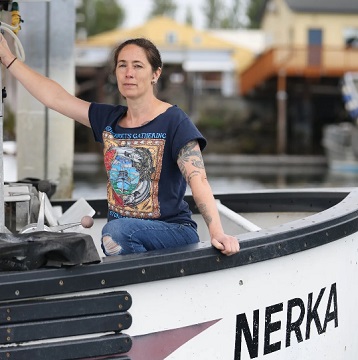
An Alaska fishery has been pitted against orcas. Can both survive?
In early May a Seattle federal judge put the brakes on this summer’s troll fishery in Southeast Alaska, ruling that the National Oceanic and Atmospheric Administration must amend its 2019 report on the impact of the fishing on endangered southern resident orcas who prefer to eat the same Chinook. But the ruling was put on hold last month by a U.S. appeals court, which allowed the fishery to reopen, citing economic harm. The complicated and contentious case probes the soft underbelly of the issue of the southern residents’ plight: the availability of nutrient-rich Chinook, their preferred meal. While fisheries up and down the West Coast are allocated fish for harvest each season, the southern residents get what’s left — and not intercepted by other predators. It has pitted fishers against orcas as some scientists and conservationists call into question the effectiveness of modern fisheries management. 9 photos, >click to read< 10:16

More women are casting their net into the salmon fishing industry
Breaking into a man’s industry isn’t easy, but “in large part, the industry is welcoming to women,” says Captain Allison Demmert, preparing her boat dockside at Fishermen’s Terminal. Allison is gearing up for the Alaska salmon season on the 58-foot F/V Chirikof (named for the Russian navigator who explored the Northwest coast of North America). Having captained the F/V Ultimo, moored one dock over, with four women out of a crew of five aboard, this year she will co-skipper their  purse seiner with her father Captain Guy Demmert and a crew of two men and two women. Born into an Alaskan family that has fished salmon for generations, she expanded her hands-on training with a maritime-engineering education. Mastering credentials like “advanced firefighting,” she’s in charge of “navigation, route planning and vessel maneuvering in all kinds of weather.” It’s a job that calls for “stamina, agility and above all, calm.” photos, >click to read< 14:38
purse seiner with her father Captain Guy Demmert and a crew of two men and two women. Born into an Alaskan family that has fished salmon for generations, she expanded her hands-on training with a maritime-engineering education. Mastering credentials like “advanced firefighting,” she’s in charge of “navigation, route planning and vessel maneuvering in all kinds of weather.” It’s a job that calls for “stamina, agility and above all, calm.” photos, >click to read< 14:38

Portraits of a fishery: Sitka trollers gear up for an unexpected season
The commercial season for king salmon, or chinook in Southeast Alaska opens on Saturday, July 1. For trollers across the region, it’s the equivalent of New Year’s Day, the beginning of the annual salmon harvest that lasts through next March. For 50 anxiety-filled days this spring, it appeared that this fishery would not happen. On May 2, a federal judge in Washington ordered fishing closed to make more kings available to an endangered population of killer whales in Puget Sound. On June 21, the US  Ninth Circuit Court issued a stay of that order, and allowed trollers to fish as usual while the case remains under appeal. Photojournalist Berett Wilber grew up in Sitka deckhanding aboard her family’s troller. She recently returned and spent a couple of afternoons visiting the docks, photographing and talking to trollers as they readied for the opening. Photos, >click to read< 07:40
Ninth Circuit Court issued a stay of that order, and allowed trollers to fish as usual while the case remains under appeal. Photojournalist Berett Wilber grew up in Sitka deckhanding aboard her family’s troller. She recently returned and spent a couple of afternoons visiting the docks, photographing and talking to trollers as they readied for the opening. Photos, >click to read< 07:40

Chinook troll fishers in Southeast Alaska to put hooks in water July 1, but how many can they catch?
One day after the Ninth Circuit Court of Appeals overturned a Seattle judge’s ruling that had shut down the Southeast Alaska chinook troll fishery, the Alaska Department of Fish and Game delivered the catch limit news to the troll fishermen, specifying the number of kings they are allowed to catch during the upcoming season. Commercial trollers will have a total allocation of 74,800 chinook salmon during the first retention period, which begins July 1. Based on data from past years, the department thinks that the goal will be reached in 9-10 days, depending on weather. >click to read< 09:35

Crab pots ‘absolutely stuffed’ as Bering Sea Dungeness fishery breaks records
While many Bering Sea crab populations are in freefall, Dungeness crab is breaking records in regions that hardly used to see them. The North Peninsula District in the eastern Bering Sea opened as a commercial Dungeness fishery in the early ‘90s. In those early days, it was common for just one or two boats to fish there — many seasons, there were none. The numbers increased modestly over the ensuing decades — but that growth has recently become exponential. “The pots that we’re seeing coming out of this fishery are absolutely stuffed with crab,” said Ethan Nichols, who works for the Alaska Department of Fish and Game. “Like, you don’t even know how many crabs can fit in a pot.” >click to read< 20:43

‘Alaska’s secret wild salmon prices hurt everybody,’ fisheries journalist says
A prominent fisheries journalist is calling into question the transparency of how much Alaskan salmon fishermen get paid for their catch. John Fiorillo is the executive editor of Intrafish, a global news bureau covering seafood, commercial fisheries and aquaculture industries worldwide. He argues that the secretive nature of price setting in Alaska salmon fisheries strains the relationship between fishermen and processors and puts everyone on precarious financial footing. Fiorillo joined KDLG’s Corinne Smith to talk about why seafood companies don’t usually set a base prices, and why he thinks it’s time for a change. >click to listen, or read< 12:33

Southeast Dungeness fishery opens to low prices
Two days before crabbing started, Petersburg fisherman Paul Menish was in the cabin of his boat, the “Hi Nikki,” speculating on crab prices. “Sounds like prices aren’t going to be as low as we were quoted three weeks ago,” said Menish. “Now, it’s just rumors, but that the prices will be for Dungeness, will be in north at two dollars. Which isn’t a good price but better than three weeks ago.” It turns out Menish was right. When he sold his first load to OBI Seafoods in Petersburg, he said he got $2.10 a pound. That’s fifty cents lower than the starting price last summer. >click to read< 10:15

Alaska’s fishermen and communities celebrate decision to allow Southeast Alaska’s Chinook troll fishery to open on July 1st
Southeast Alaska’s fishermen and communities welcomed the U.S. 9th District Court of Appeals’ decision on June 21st to keep Southeast Alaska’s Chinook troll fishery open while the National Marine Fisheries Service (NMFS) addresses a technicality in its 2019 Biological Opinion for Southeast Alaska’s salmon fisheries. In its order, the federal appeals panel shared that there was ample evidence submitted showing that the impacts of shutting down the Alaska salmon fishing industry would “outweigh the speculative environmental threats” of keeping the fishery open. “The court’s decision is a huge relief for hundreds of small-boat fishing families that rely on this fishery for their income,” said Linda Behnken, Executive Director of the Alaska Longline Fishermen’s Association. >click to read< 07:15

Kenai Peninsula fisherman Snooks Moore retires from lifelong participation in Alaska commercial fisheries
Homer’s Snooks Moore has spent her life in Alaska commercial fisheries. After 38 years in the salmon drift fishery, the 79-year-old Kenai Peninsula woman will, for the first time, not be heading to Bristol Bay with the F/V Razor’s Edge. “She wanted to keep fishing, but Grandpa wanted to go travel and enjoy life. It’s been about four years that he’s been pushing for it and she finally agreed,” her grandson Justin Arnold, said. The Moore family has been in the Cook Inlet area for many generations and Moore originally started fishing in setnet operations in the Kasilof region. She also participated in the Cook Inlet drift fisheries and then False Pass for several years before heading to summers in Bristol Bay. “My folks had setnet sites on Kalifornsky Beach, where I spent all my childhood, that they bought from my uncle Jack in 1939. They also had some sites closer to the Kenai River,” Snooks Moore said in a conversation on June 7. >click to read< 16:23

Fishing season is on in Southeast Alaska
The 9th U.S. Court of Appeals on Jun. 21 halted the implementation of a U.S. District Court decision that would have shut down the Chinook fishery in Southeast Alaska for the summer. Alaska Governor Mike Dunleavy, Attorney General Treg Taylor, and Department of Fish and Game Commissioner Doug Vincent-Lang reacted to the Court’s decision. Governor Mike Dunleavy said, “The 9th Circuit got it right when it found that Alaska’s fishing interests outweighed the “speculative environmental threats.” There’s a gauntlet of obstacles before the Chinook reach our fishery. The ruling comes just in time so that our commercial troll fishers in Southeast have a season. And we are grateful for it.” >click to read< 17:20

Council to reconsider red king crab closure options
Regulators are inching closer to closing areas of Bristol Bay to commercial groundfish fishing in an attempt to help conserve the depleted red king crab there. The North Pacific Fishery Management Council has requested more information for a second evaluation of options for what to do about the Bristol Bay Red King Crab fishery. At its meeting from June 6-11 in Sitka, the council tweaked some of the options for closures and asked its staff to gather more information for another review at its next meeting. The current options issue annual closures for part of Bristol Bay to all commercial groundfish gear types, though one option excludes non-pelagic trawl. >click to read< 09:40
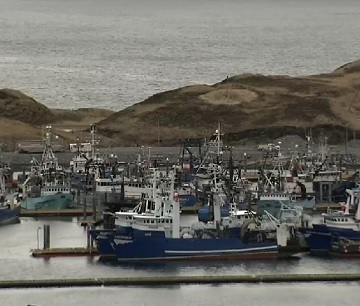
ADF&G discusses where to spend disaster funding for crabbing fisheries
The Alaska Department of Fish and Game hosted a second meeting to discuss how to distribute funds to fisheries that experienced disaster in recent years, with Thursday’s meeting focusing on Bristol Bay red king crab and Bering Sea snow crab fisheries. Much of the discussion centered around the division of payments between the vessel and crew members, with several people calling for 60% to go to the vessel and 40% to the crew, rather than a 70/30 split. “The boat I’m on and have been on for many years, we’re the same on any crab fishery — it’s always 60 to the boat and 40 to the humans,” fisherman Mike Mathisen said. Video, >click to read< 13:40

NOAA says revised analysis could allow Southeast king salmon troll fishing, despite ruling
The National Marine Fisheries Service hasn’t ruled out the possibility of opening the summer troll season for king salmon in Southeast Alaska, despite a federal judge’s recent ruling to the contrary. The service’s Alaska regional administrator, Jon Kurland, told a roomful of trollers during a June 7 meeting in Sitka that the agency was working hard to correct the problems identified in the federal lawsuit. The Wild Fish Conservancy in Washington state sued to stop the Southeast Alaska troll season, seeking to protect endangered Southern Resident killer whales’ food sources. >click to read< 12:57
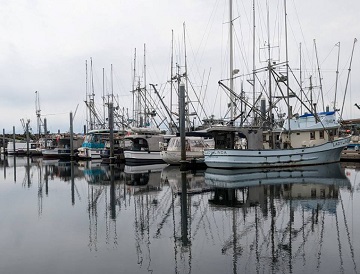
‘It’ll be a disaster’: Southeast Alaska fishermen fear looming closure of king salmon fishery
“I’m optimistic, but I’m also scared as heck,” said Eric Jordan, a lifelong fisherman and resident of trolling stronghold Sitka at the standing room-only meeting with federal National Marine Fisheries Service officials. The closure of the king salmon fishery in Southeast Alaska would be economically devastating, according to many in the region who rely on the valuable fish for their annual income. A federal judge in Washington state effectively shut down the fishery in May in response to a lawsuit brought by Wild Fish Conservancy, a Washington organization. The suit contends that the fishery should be closed to protect endangered killer whales in Puget Sound that feed on chinook salmon. >click to read< 11:46

Darren Byler files Two Multi-Million Dollar Lawsuits Against the Coast Guard and the City of Kodiak for the Illegal Sinking of the M/V Wild Alaskan
The 110’ F/V Shaman a Bering Sea Legend was just recently, intentionally sunk by the City of Kodiak, Alaska. The vessel was purchased in 2006 by Darren and Kimberly Byler from then owner, Dan Mattsen. The Byler’s took possession of the vessel at Fisherman’s Terminal in Seattle, Washington and relocated the vessel to Alaska. The Byler’s modified and remodeled the vessel for the Research, Exploration and Long-Range Charter Industry. From 2007-2014 Darren and Kimberly Byler were at the top of their game with this boat and renamed the vessel “Alaskan Leader”. In 2014, Darren Byler stated that his charter business bookings were down as was the economy, at that point Byler came up with an edgy idea to rename the vessel “Wild Alaskan” and provide an Adult Entertainment Charter with Topless Dancers to the local Kodiak Fishing and Coast Guard Population. >click to read< 17:44

Fishers harvesting abundant Bristol Bay sockeye could fill knowledge gaps about declining Chinook
In the Bristol Bay region, sockeye salmon runs have been booming while Chinook runs have dwindled. Now scientists are seeking to enlist fishing crews in the effort to find out why, as well as what can be done about the Chinook troubles. A community-focused program called Skipper Science is asking for Bristol Bay fishermen working on the salmon-rich Nushagak River to record the prevalence, locations and conditions of Chinook salmon they encounter – and the places where they are not found. In the Bristol Bay region, sockeye salmon runs have been booming while Chinook runs have dwindled. Now scientists are seeking to enlist fishing crews in the effort to find out why, as well as what can be done about the Chinook trouble. >click to read< 11:01

Sitka scallop fishery a test of one entrepreneur’s ingenuity and skill
On days when Evan O’Brien isn’t diving for pink swimming scallops or harvesting gooseneck barnacles off steep rock faces at low tide you can find him in a slip at Thomsen Harbor, working on the new diving boat he purchased from Oxnard, California earlier this year. The F/V Sinbad was purchased by O’Brien for his company, Merrick Shellfish, from a sea urchin diver, so the boat is equipped with everything he needs for a dive. So what does a typical dive for these scallops look like? “You’ll swim up to a boulder or something that’s covered with them,” O’Brien explains. “And in the winter like this, maybe, I don’t know, 10 to 20% of them will take off, start swimming,” he continues. “I just leave those, and I harvest the ones that stay, because they’re kind of dormant and they’re sort of hibernating, so they’re easier to harvest.” Video, >click to read< 16:45

How Commercial Fisherman Corey Arnold Got Hooked On Fishing
Chris Arnold was an avocado grower and nurseryman, in Southern California, who bought a fishing boat when Corey was a toddler. He was reeling in baby sharks while still in diapers. “My dad was obviously busy with work and running a business, so fishing was a hobby for him,” says Arnold. “But I was 100 percent on fishing.” It was on a summer fishing trip to Alaska with his dad that Arnold first observed a commercial fishing operation — by 19, he had his first fishing job. He went on to work for seven years as a crab fisherman in Seattle, and eventually made his way to Alaska fishing for king crab on the F/V Rollo (featured on Season 2 of the Deadliest Catch) in the depths of winter, on the Bering Sea. Photos, >click to read< 11:15

DOJ will appeal court order forcing Southeast Alaska king salmon troll fishery closure
The United States Department of Justice will appeal a federal court order forcing the closure of the commercial king salmon troll fishery in Southeast Alaska. In early May, Washington U.S. District Court Judge Richard Jones upheld an earlier recommendation that the Southeast summer and winter king fisheries were catching too much of the food source of a dwindling population of Puget Sound’s Southern Resident killer whales, in violation of the Endangered Species Act. The defendant intervenors in the case, the Alaska Trollers Association and the State of Alaska, filed motions earlier this month calling for a “partial stay” of the order, pending an appeal to allow the fisheries to proceed. >click to read< 15:58







